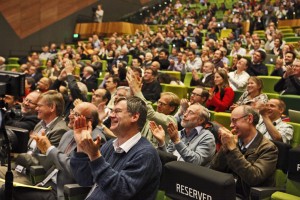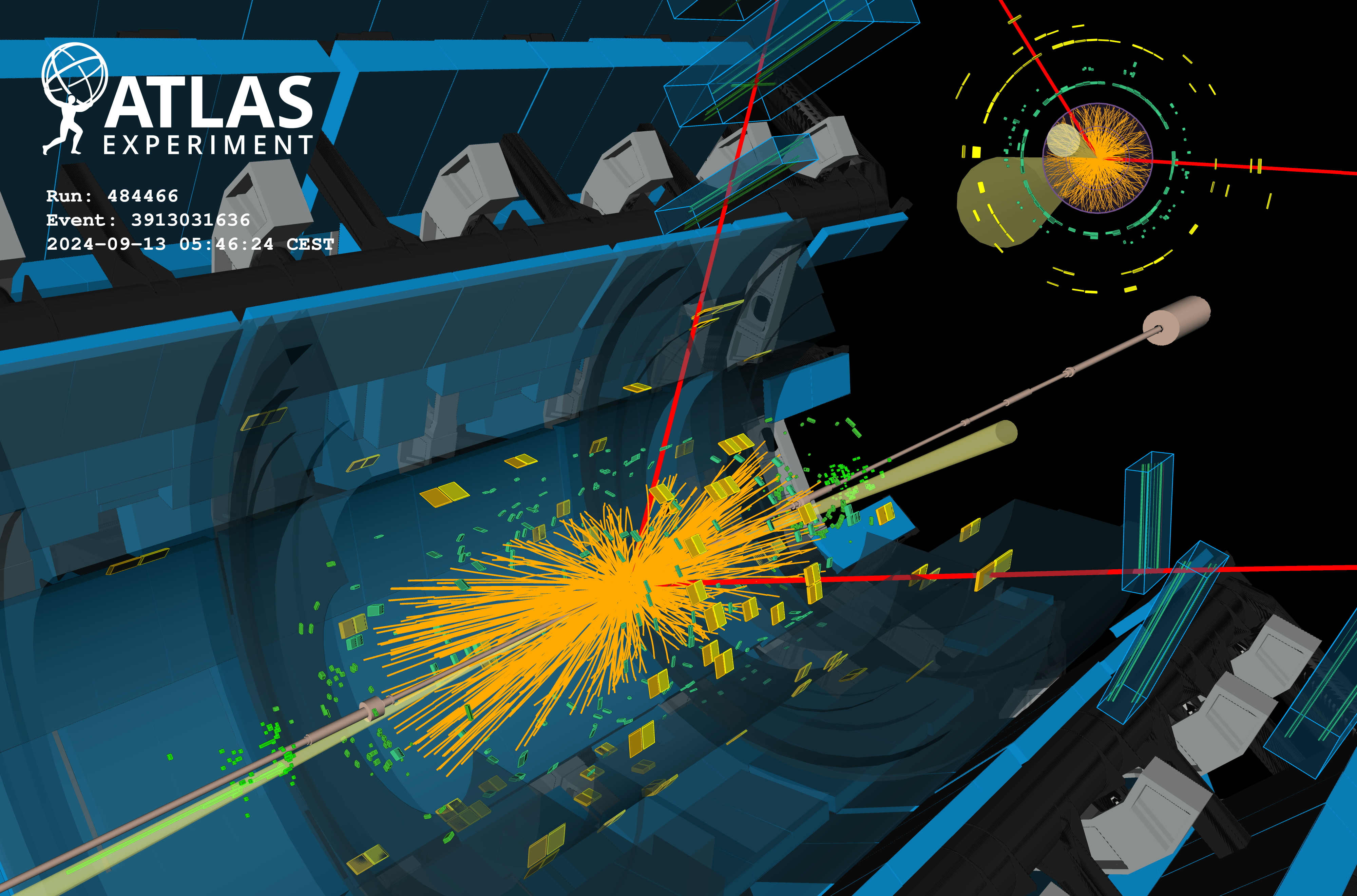Melbourne Dispatch: A First Coming To Terms with Discovery
9 July 2012 | By
Where to begin? The 4th of July, 2012 will remain burned in the memories of those of us fortunate to be delegates at this historic 36th International Conference on High Energy Physics (#ICHEP2012) in beautiful Melbourne, Australia.
My day began in a Boeing 747, dodging tropical clouds high above the Pacific Ocean. One connection in Sydney, two shuttle buses, and one shower later, I found myself in the plenary hall at the stylish and serene Melbourne Convention and Exhibition Centre. Projected onto the giant Melbourne screen was a live video connection to the CERN amphitheatre in Geneva, where the much awaited Higgs boson search update talks, timed for ICHEP, were about to commence. My sentiments immediately turned to Dec. 13, 2011, when I was at CERN to live-tweet the "tantalizing Higgs hints" talks for McGill. This time around, I was among a handful of physicists who'd agreed to help tweet the Melbourne conference on behalf of CERN.

The seminars that followed have already been widely discussed in blogs, newspapers, and other media, right down to the choice of font used. Through my tweets, under the handle @AWarb and hashtag #ICHEP2012, I endeavoured to convey minute-by-minute happenings while maintaining some editorial restraint. It felt a little like being a play-by-play broadcaster at a momentous sporting event, but one in which I played for one of the teams, the score was basically tied, and the teams were both separately and mutually victorious.
Minutes before the talks began, there was a distinct air of anticipation amongst the Melbourne delegates. On our giant screen, we watched as the CERN camera zoomed to one of the Geneva attendees, a placard reading "Ciao Mamma!" visible on his desk. The audience in Melbourne chuckled nervously. Then we saw Professor Higgs and the other living progenitors of the theoretical Higgs-mechanism concept entering CERN's amphitheatre, to loud applause. Melbourne reacted as well. But when CERN's Director-General Rolf-Dieter Heuer entered the room and prepared to initiate the proceedings, our Melbourne hall fell utterly silent.
Joe Incandela, spokesperson for the CMS collaboration, began with the first talk. Excitement at CERN and in Melbourne mounted as the results, initially articulated carefully for each of the studied decay channels, culminated in a discovery-level combination to reveal, unequivocally, that we had a new particle on our hands. The CMS team had even analyzed its data enough to be able to quote the new particle's mass with an impressive precision of under 0.5%. Moments later, I tweeted "Day's big question: are these Standard Model #Higgs bosons, or something else? There's something there, but what is it exactly?"
Then, it was spokesperson Fabiola Gianotti's turn to present our ATLAS collaboration's Higgs search results. We ATLAS collaborators already knew our outcome, but it was nevertheless thrilling to see it presented in this electrified forum. When Fabiola's talk climaxed with our combined-channel statistical significance, the Melbourne delegates erupted in sudden loud applause followed by an immediate, eerily stunned, silence. Appreciation for the historic importance of this amazing day had now fully gripped the hall.
Meanwhile, an interesting sequence of events had occurred. CERN's press release had been embargoed until the start of the second hour of the event, during Fabiola's ATLAS talk. The moment it went public, my Twitter feed began to light up with scientific commentators, news organizations, and others heralding the discovery. Because of the timing, the ATLAS discovery punchline actually got sent to the rest of the planet before Dr. Gianotti reached it in her talk to the CERN and Melbourne scientific audiences.
The ICHEP meeting is now in full swing here in Melbourne. We've had detailed talks and discussions about the key ingredients of this new particle discovery. Other delegates and I have been tweeting updates with both Higgs and non-Higgs news. We've also been getting interesting questions from the worldwide public, some scientifically detailed, some more in the category of outreach. We're gradually getting better at putting Greek and other scientific symbols into tweets! G'day mates, from Down Under.




